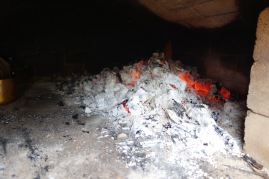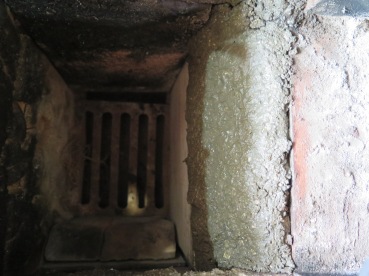and then a Provenḉal inspired egg plant parmigiana for dinner, all from our abundant summer garden. BBQ’d egg plant and zucchini simmered in Janine’s fresh tomato sugo, made with lots of chilli in this batch and then finished under the grill with a bit of parmigano grated on top.
Monthly Archives: January 2016
Sour Dough Clay
We try to allow ourselves a little time ‘off’ over the summer from the usual on-going procession of jobs. This year we had two lots of relatives visiting, so that was a good excuse to not do any other work for a week or two. Then I taught a Master Class in fine throwing and turning techniques up in Sydney for a week. So now it’s back to work. The very real work of essential property maintenance and more clay making while the weather is hot.



East Meets West, West Eats Meat
Having not eaten any meat for 4 months, we have suddenly gone from sublime to ridiculous, famine to feast, from sashimi to steak.
Xmas has come and gone and we spent a quiet day together, as our son is the sous chef at Biota dining. The only 2 hat restaurant in the Southern Highlands. He did Xmas lunch for 160, so started at dawn and finally finished at 9pm.
We had our family get-together Xmas lunch on Boxing Day. We envisaged a small meal of vegetables from our organic garden with a little meat, almost as a side dish, cooked in the outside wood fired oven and enjoyed outside, under the shade of the grape vines. This wasn’t to be, as our son turned up with a barron of beef and half a pig, which he set about butchering into sections of ribs and pork belly.
He made a rolled pork belly roast stuffed with trimmings and herbs from the garden, with loads of roasted garlic and we roasted this slowly during the day at the back of the oven.
Geordie slowly roasted the 5 point rack of 90 day aged beef, very gently over an extended period. This became our lunch along with our usual BBQ’d garden vegetables.
The rolled roast and ribs, along with half a dozen pizzas, went to the village musicians who turned up later in the evening.



We braised the full rack of pork ribs in a mix of last summers preserved tomato sugo, red wine, cloves and star anise, onions, with garden herbs and bay leaves. This was simmered in the lightly stoked oven for a long time until very tender and then the sauce was drained and strained, and then added back to the pan with the addition of a few spoons fun of our fruit jelly to sweeten it and gell it up. This was poured back over the ribs to finish them to a sweet, fragrant, tender, sticky perfection. Yum!
I’ve never cooked a full side of pork ribs before, as there are only two of us here, there isn’t much need and we don’t usually eat so much meat. But it’s Xmas, the season of excess, and tonight we have the Village Musicians meeting here for their extended ‘session’. We hosted them here last month as well and they seemed to like it, so we invited them back. It just turns out to be the night of boxing day. So I stoke up the oven when they arrive and we sit under the grape vines and listen to their songs, while I bake 6 pizzas and finish off the ribs.
Now it’s time for a day ‘off’ and a little snooze.



































You must be logged in to post a comment.